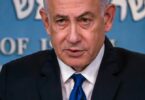Evgeny Mazin
The Russian government has set up an anti-sanctions headquarters. This was announced by Prime Minister Mikhail Mishustin, who headed it, adding that his deputies would be First Deputy Prime Minister Andrei Belousov, whose task would be to develop measures at the federal level, and Moscow Mayor Sergei Sobyanin, who would coordinate operational measures at the regional level.
In the meantime, our fin-ancial authorities have alr-eady issued a whole package of measures designed to support the domestic economy and the financial sector, contain the depreciation of the ruble and dom-estic securities, and compensate citizens and companies for the inconvenience caused by sanctions.
Help to the population
After the Bank of Russia raised the key rate to 20% per annum, banks began to raise interest rates on deposits and loans. In order to prevent a massive revision of rates on debts already owned by citizens, Vladimir Putin instructed in the agreements concluded before the increase in the key rate (February 28) to keep rates at the same level.
Also, despite falling under the sanctions of the largest Russian banks, including disconnecting them from access to the services of global payment systems (Mastercard has already announced this, and Visa announced that it is taking “prompt measures to ensure compliance with sanctions”), the Central Bank announced that all transactions within the country on the cards of these systems will continue to run smoothly. Problems can only arise when paying for purchases in online stores located abroad, as well as when trying to pay using GooglePay, Apple-Pay and SamsungPay. At the same time, failures in the operation of these services for cards of other banks that are not blacklisted are not expected.
Help for banks
The Central Bank has dissolved the accumulated macroprudential capital buffer for unsecured consumer loans and mortgages. In other words, he abolished the “risk ratios” that actively lending banks had to take into account when building their capital. This additional accumulated money will now be used to support the banks’ own stability and the banking system as a whole. Thanks to the “dissolution of the capital buffer,” banks released about 733 billion rubles.
The Central Bank also expanded the list of main activities of legal entities whose loan obligations are accepted by the regulator as collateral for loans issued by the Bank of Russia. This means that commercial banks can now raise money from the Central Bank for a wider loan portfolio.
In addition, the Bank of Russia allowed credit institutions until December 31, 2022 not to worsen the assessment of the financial position of the borrower when creating provisions for losses and recommended restructuring the debt and not imposing fines and penalties on loans (loans) if the financial position of borrowers worsened after February 18 because of the sanctions.
Help financial markets
The Central Bank resumed buying gold on the domestic precious metals market. The purchase price is determined daily based on the morning price of the London Bullion Market Association. The scheme for acquiring gold by the regulator inside the country looks like this: commercial banks purchase it from mining companies and resell it to the Central Bank.
Recall that the Bank of Russia stopped officially purchasing gold within the country on April 1, 2020, and before that, it had been actively increasing its reserves for six years and was the world leader in such operations. As of February 1, Russia’s reserves have accumulated gold worth $132.3 billion.
As part of the fight against the outflow of investors and the withdrawal of funds from the Russian stock market, two measures were introduced. The first is a ban on brokers selling Russian securities on behalf of non-residents of the Russian Federation. The second is a ban on professional financial market participants withdrawing income and dividends on domestic securities abroad, foreign individuals and legal entities. In addition, a presidential decree of foreign investors will impose a ban on the sale of Russian assets. According to Mikhail Mishustin, the draft presidential decree will be signed in the near future. The measure was taken to enable foreign players to make “more informed decisions” by avoiding the temptation to succumb to political pressure to the detriment of business.
And to support the securities market, on February 26, Mikhail Mishustin signed an order in which the Ministry of Finance of the Russian Federation was instructed to spend up to 1 trillion rubles from the National Wealth Fund to purchase shares of domestic companies traded on st-ock exchanges during 20-22. In addition to the actual support from an excessive fall, this measure may also have another meaning – the state will be able to consolidate fairly large stakes in companies from strategically important industries.
Help ruble
Another measure of support was the decisionto oblige Russian companies engaged in export trade to sell 80% of their foreign exchange earnings to the state without fail. The obligatory sale of a part of the foreign currency received by companies is necessary to maintain the level of supply and demand, so that there is no shortage of foreign currency on the market, and, consequently, the pressure on the ruble exchange rate decreases. It was first introduced in 1991 to stop its leakage abroad. True, the previous “mandatory” maximum reached only 75%. It was introduced in 1998, during the crisis, and rem-ained at this level until 20-01. Then, the share required for sale gradually decreased over several years, until it was completely abolished in the spring of 2006 as part of the transition of the Russian ruble to free conversion. Now this tool is needed again.
And to prevent the currency from being taken out of the country in suitcases, Vladimir Putin signed a decree on limiting its export in cash. Starting today (March 2), you can take out no more than $10,000 in cash or the equivalent of this amount in another foreign currency.






